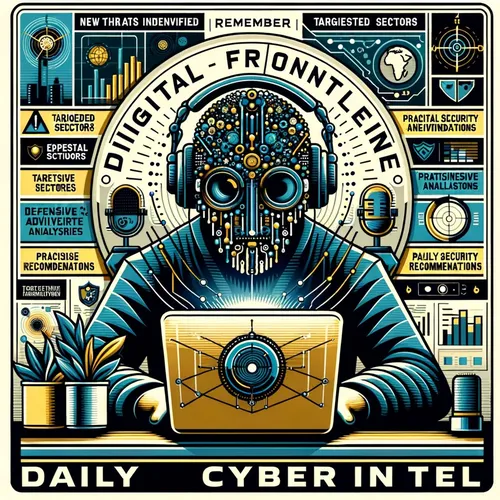Psst! China's Cyber Ninjas Lurk in U.S. Grids, Meds, and Clouds—Is Your Nightlight On?
- Author
- Quiet. Please
- Published
- Wed 20 Aug 2025
- Episode Link
- https://www.spreaker.com/episode/psst-china-s-cyber-ninjas-lurk-in-u-s-grids-meds-and-clouds-is-your-nightlight-on--67458540
This is your Digital Frontline: Daily China Cyber Intel podcast.
Listeners, it’s Ting here with your Digital Frontline: Daily China Cyber Intel—where you get the byte-sized scoop on all the latest cyber offensives aiming at the U.S. Let’s skip the preamble and dive straight into the digital trenches, because, let’s be honest, the threat actors don’t take coffee breaks.
In the last 24 hours, coast-to-coast digital assets have been staring down both persistent and evolving threats from Chinese cyber operations, with experts like the folks at FPRI emphasizing how China’s cyber playbook is pulling lessons from the Ukrainian war and doubling down on hybrid warfare strategies. If you’re in the defense, tech, or especially the critical infrastructure game—think utilities, energy, telecom, and transport—it’s been another “keep your nightlight on” kind of day.
China’s Volt Typhoon group remains in the spotlight after prolonged intrusions into vital U.S. infrastructure. Their MO? Quiet, long-term access, snooping for pre-positioning—think cyber sleeper cells hanging out in your power grid. The Biden administration's updated National Security Memorandum now puts CISA at the center of coordinating defensive moves, emphasizing sector-specific risk assessments and a National Infrastructure Risk Management Plan. Practical translation? If your utility bill feels high, it might not just be the A/C—it could be a Chinese spearphisher trawling for credentials.
Meanwhile, according to Cybersecurity Dive, industries like biotech and pharmaceuticals have been pushed to the brink. After Qilin’s recent ransomware smackdown, which forced Inotiv to drag their systems offline, companies are racing to shut any wide-open digital windows. This particular attack might smell “ransomware for ransom’s sake,” but the proximity of China-linked cyber actors means no one’s feeling relaxed about attribution—especially after last year’s U.S. warnings about supply chain vulnerabilities and third-party risk from Chinese firms.
Let’s not overlook the serious fuss at Microsoft. After a decade, Redmond’s finally pulled the plug on letting China-based engineers access U.S. Department of Defense cloud systems. ProPublica’s exposé rocked D.C., and experts say that was the digital equivalent of leaving the front door open during a monsoon.
A new daily must-read is the H-ISAC headlines, which today reported fresh attacks by Chinese APTs against Taiwanese hosting firms, likely as a backdoor hop into U.S. or Five Eyes cloud customers. Don’t sleep on Linux kernel vulnerabilities either—the Netfilter flaw enables privilege escalation and is being actively scanned for by opportunistic actors. Patch and patch now, or risk joining the “hacked and learning” club.
On the regulatory side, the Committee on Foreign Investment in the United States (CFIUS) sharpened their oversight, scrutinizing even minority tech investments linked to China. It’s not just firewalls anymore, but who’s financially upstream of your favorite platforms and their juicy piles of sensitive user data.
What’s the quick-hit defensive play? All critical orgs should revisit identity and access controls, patch all CVEs from the past 24 months—stat—monitor outbound traffic for unusual TFTP or FTP flows, and demand third-party transparency from vendors. Engineers in Suzhou shouldn’t have super-admin on your DC cloud. If you’re part of the 500,000 cybersecurity roles yet to be filled, now’s your time: the arms race is only heating up.
Thanks for tuning into Digital Frontline! Hit subscribe for your daily infusion of wit, wisdom, and warnings. This has been a quiet please production, for more check out quiet please dot ai.
For more http://www.quietplease.ai
Get the best deals
